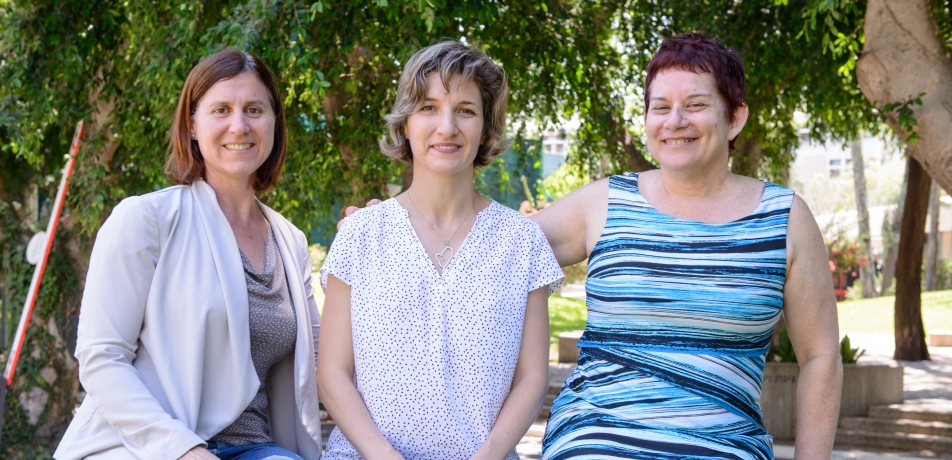Journey of the developing brain
The integral role of the immune system in brain formation
Briefs

L to R: Dr. Sapir, Dr. Gorelick, Prof. Reiner
We usually think of the immune system as the body’s police force, vigilantly patrolling for invading pathogens and toxins to destroy—but a new study published in Nature Communications from Prof. Orly Reiner’s laboratory in the Department of Molecular Genetics indicates that the immune system is also essential to brain development.
Prof. Reiner and her team showed that the innate immune complement system—the all-purpose, in-born part of our immune system—is active in the developing embryonic brain, where its role appears to be convincing newborn cells to migrate from their point of origin to their final functional positions in the brain. Without the activity of the innate immune system, newborn neurons fail to commit to the journey, stall in their cellular cradles, and an altered cortex results.
“We have, for the first time, defined a specific role for an innate immune pathway in brain development,” says Prof. Reiner.
An embryo starts out as tiny ball of identical cells. As it develops into a full-fledged organism, the cells destined to become brain cells travel outward from this ball in a series of waves. The cells in each successive wave develop a ‘front’ and ‘back’, leap-frog over the older cells, settle into proper position, and then dismantle their ‘front’ and ‘back’ machinery. In this way, the brain’s cortex becomes a series of six layers, with the youngest cells having migrated farthest, being egged on by chemical signals from older sister cells to keep going.
Dr. Anna Gorelick, a postdoctoral fellow in Prof. Reiner’s lab, was studying the different innate immune complement pathways when she noticed that a gene encoding a key protein in the pathway, called C3, was active in the developing brain. “I didn’t expect to find C3—a protein involved in fighting infections—active in the developing brain, and I was curious: what impact did that activity have?” she says.
So the lab team—Dr. Gorelick, staff scientist Dr. Tamar Sapir, Prof. Reiner, and others—examined what this activity could mean by looking at the brains of mouse embryos that had been genetically engineered to have no or limited C3 activity. The results were remarkable: the neurons that were engineered to have limited or no activity of the C3 gene migrated insufficiently, leading to a cortex with altered cell layers. Moreover, when the team introduced molecules designed to mimic the action of C3 into the C3-limited brain tissue, they were able to partially ‘rescue’ the brain—that is, they were able to kick-start the stalled neurons and get them migrating again. Prof. Reiner hypothesizes that C3 activity convinces ‘uncommitted’ neurons to commit to a direction, hit the neuronal road, and reach their appropriate destinations.
The findings have implications for some neurodevelopmental disorders, including a rare syndrome known as 3MC and autism spectrum disorder (ASD).
Prof. Orly Reiner is supported by The Nella and Leon Benoziyo Center for Neurological Diseases, the Kekst Family Institute for Medical Genetics, the Lulu P. & David J. Levidow Fund for Alzheimers Diseases and Neuroscience Research, and the Dr. Beth Rom-Rymer Stem Cell Research Fund. Prof. Reiner is the incumbent of the Bernstein-Mason Chair of Neurochemistry.